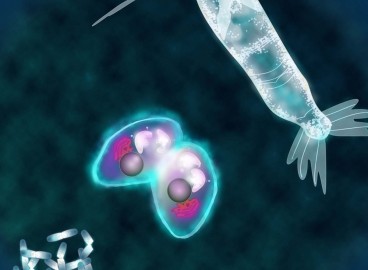Christopher P. Kempes, Michael J. Follows, Hillary Smith, Heather Graham, Christopher H. House, Simon A. Levin (2021), Generalized Stoichiometry and Biogeochemistry for Astrobiological Applications, Bulletin of Mathematical Biology, doi: 10.1007/s11538-021-00877-5 Continue reading Generalized Stoichiometry and Biogeochemistry for Astrobiological Applications
Tag Archives: Kempes

For the Good of the Colony
For some microbes, the motto for growth is not so much “every cell for itself,” but rather, “all for one and one for all.”
MIT researchers have found that cells in a bacterial colony grow in a way that benefits the community as a whole. That is, while an individual cell may divide in the presence of plentiful resources to benefit itself, when a cell is a member of a larger colony, it may choose instead to grow in a more cooperative fashion, increasing an entire colony’s chance of survival.
Publication
Kempes, C.P., S. Dutkiewicz, and M.J. Follows (2012), Growth, metabolic partitioning, and the size of microorganisms. Proceedings of the National Academy of Science, 109, 495-500, doi: 10.1073/pnas.1115585109

Microbe Metabolism
Population growth rate is a fundamental ecological and evolutionary characteristic of living organisms, but individuals must balance the metabolism devoted to biosynthesis and reproduction against the maintenance of existing structure and other functionality. Chris Kempes, Stephanie Dutkiewicz and Mick Follows have developed a mathematical model relating metabolic partitioning to the form of growth. The research is published in the Dec. 26 issue of the Proceedings of the National Academy of Sciences.